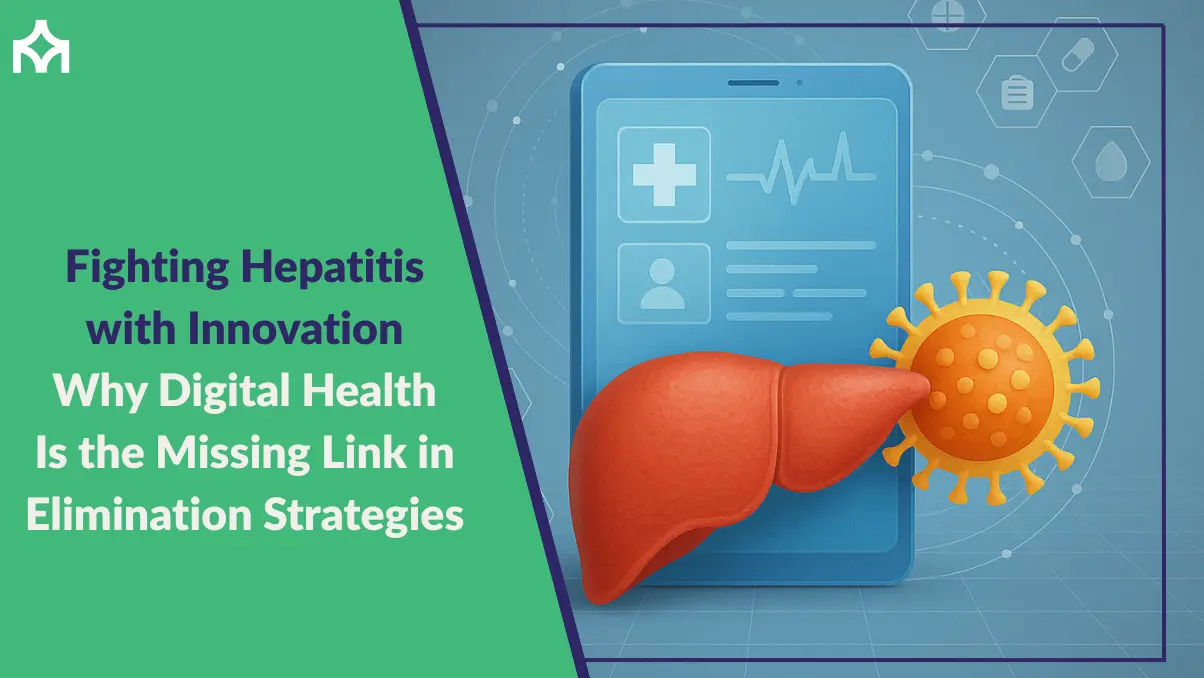Fighting Hepatitis with Innovation: Why Digital Health Is the Missing Link in Elimination Strategies
Digital Health: The Missing Link to Hepatitis Elimination by 2030
The global battle against hepatitis is at a turning point in 2025. Despite decades of progress, viral hepatitis remains a top-ten killer—claiming 1.3 million lives annually and infecting 6,000+ people each day. Types B and C drive most cases, silently fueling liver cancer and chronic liver disease worldwide.
The good news: hepatitis can be eliminated with vaccination, prevention, and effective therapies. The challenge: we’re still off-track for the WHO 2030 goal. What’s missing isn’t medical knowledge—it’s connectivity, continuity, and coordination. Digital health is the infrastructure that can bridge the gaps and scale what works. As this year’s World Hepatitis Day theme urges—“Let’s Break It Down.”
The Issue: Elimination Is Stalling
More than 296 million people live with chronic hepatitis B and ~58 million with hepatitis C—yet ~90% are unaware of their infection. Inconsistent screening, fragmented follow-up, and uneven access to treatment slow progress, even in digitally advanced systems where siloed data and limited automation persist.
- Lack of real-time surveillance and registries
- Poor integration across labs, clinics, and outreach programs
- Limited use of automation to scale prevention and linkage to care
The Case for Digital Health in Hepatitis Elimination
-
Smart Screening & Outreach
Digital platforms enable self-screening, mobile clinics, and telehealth consults. AI flags high-risk patients from EHR data (demographics, comorbidities, geography). Only ~10% of people with HBV and ~30% with HCV know their status—closing this gap starts with digital first-mile access. -
Connected Diagnostics & Faster Linkage
Rapid tests connected to national systems stream results in real time. Cloud dashboards track testing rates and hotspots, while e-referrals and telehealth convert positives into treatment—before patients are lost to follow-up. -
Telehealth to Close the Treatment Gap
Virtual visits, e-prescribing, and remote labs sustain adherence—vital for rural, migrant, and refugee populations with scarce hepatology access. -
Digital Contact Tracing & Risk Mapping
Geospatial tools identify transmission clusters; systems trigger real-time alerts, geo-tag vaccination drives, and deploy test kits where they’re needed most. -
Data-Driven Policy & Predictive Analytics
Ministries and NGOs use ML to model caseloads, forecast resources, and measure program impact—enabling proactive, targeted funding and staffing.
Early Success Stories
- Egypt: National EHR integration and mobile screening units reached 60M+ people for HCV; digital follow-up protocols accelerated cure rates.
- India (Punjab): Digital tracking enrolled 75%+ of confirmed HCV cases into treatment—more than double prior averages.
- Rwanda: mHealth tools educated rural communities on HBV vaccination and tracked coverage in real time.
- UAE (Riayati): Linking hepatitis data across facilities improves continuity and patient monitoring.
Barriers to Watch
- Privacy concerns in disease surveillance and tracing
- Digital literacy gaps among vulnerable populations
- Data fragmentation and interoperability challenges
- Cost constraints in underfunded health systems
The Road to 2030
Eliminating hepatitis is a systems challenge. Countries that standardize data, integrate labs and clinics, fund digital-first outreach, and measure outcomes in real time will move fastest toward 2030 goals.
Let’s break down silos, break barriers to access, and—ultimately—break hepatitis.
Ready to connect the dots? MGA helps ministries, NGOs, and providers design digital hepatitis programs—from screening to cure. Contact hello@modalityglobal.com.
Sources: WHO; World Hepatitis Alliance; National Viral Hepatitis Control Program (India); UAE MOHAP – Riayati; Rwanda Biomedical Centre.






